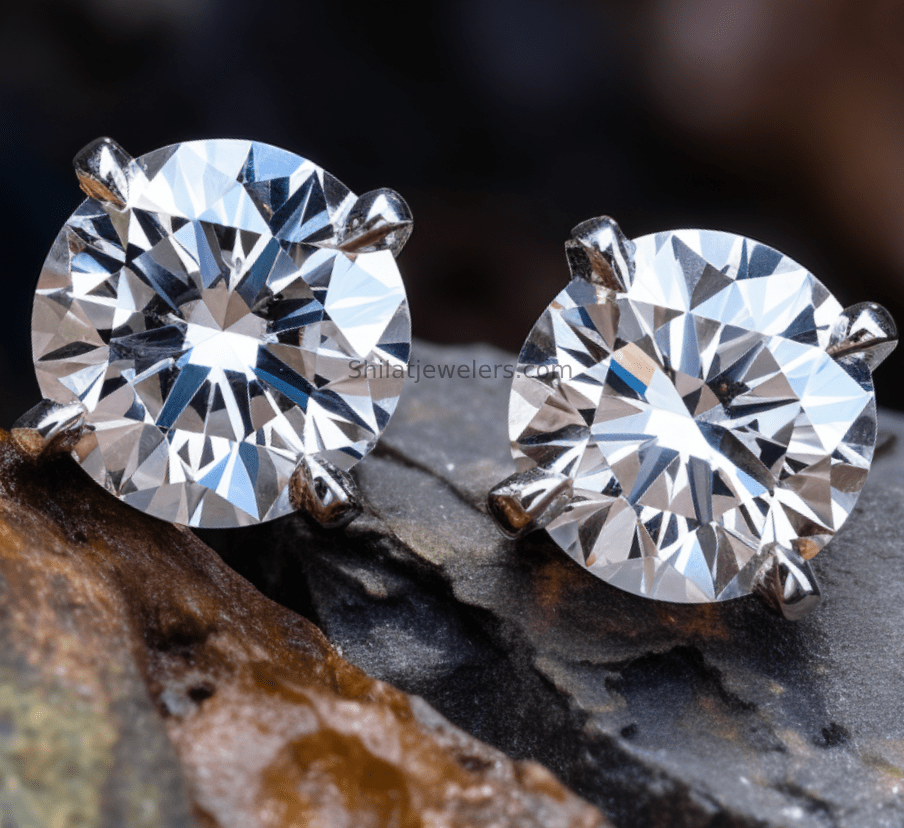Blog entry by eran b

Diamonds have long held a place of fascination in human history, symbolizing love, commitment, and luxury. Traditionally, these coveted gems were formed deep within the Earth's crust over millions of years, making them a rare and expensive commodity. However, the landscape of diamonds has undergone a significant shift in recent decades with the rise of lab-grown diamonds.
This blog post delves into the fascinating evolution of lab-grown diamond jewelry, exploring its journey from a scientific marvel to a mainstream market force, and how it has transformed the way we view and wear diamonds.
Early Days: The Seeds of Innovation
The concept of lab-grown diamonds can be traced back to the 1800s when scientists theorized the possibility of replicating the natural diamond formation process. However, it wasn't until the mid-20th century that technological advancements made this a reality. In 1954, General Electric (GE) successfully created the first lab-grown diamond using a process called High-Pressure, High-Temperature (HPHT). This method mimicked the extreme pressure and heat conditions present deep underground, allowing for the growth of tiny diamond crystals.
The Quest for Quality: Refining the Process
While the initial breakthrough was a scientific triumph, the early lab-grown diamonds were far from perfect. They were small, often cloudy and flawed, and lacked the brilliance and sparkle of their mined counterparts. Decades of research and investment were poured into refining the HPHT method and developing a new technique called Chemical Vapor Deposition (CVD).
CVD involved placing a diamond seed in a chamber filled with a carbon-rich gas. When exposed to intense heat and a low-pressure environment, the carbon atoms bonded to the seed, gradually forming a new diamond layer by layer. This process offered greater control over the diamond's growth, allowing for the creation of larger, higher-quality gems.
Breaking Barriers: Entering the Market
By the 1980s, lab-grown diamonds had reached a point where they could be commercially viable. However, public perception remained a hurdle. Consumers associated lab-grown diamonds with a lack of quality and questioned their legitimacy as "real" diamonds. It took years of education and marketing efforts to challenge these misconceptions.
A Turning Point: Ethics and Sustainability
A crucial turning point came in the early 2000s with the growing awareness of the environmental and social issues surrounding mined diamonds. Concerns about unethical mining practices, conflicts fueled by diamond trade, and the significant environmental impact of extraction processes began to shift consumer preferences. Lab-grown diamonds, created in controlled laboratory settings with minimal environmental footprint, emerged as a compelling ethical alternative.
A World of Brilliance: Design Innovation Takes Center Stage
As lab-grown diamond technology matured and production costs decreased, the market witnessed a surge in demand. This led to a wave of innovation in design. Unlike mined diamonds, which are limited by their natural formation, lab-grown diamonds offered more freedom for experimentation. Designers could explore a wider range of cuts, colors, and sizes, pushing the boundaries of traditional diamond jewelry.
A Diamond for Everyone: Accessibility and Personalization
Another significant impact of lab-grown diamonds has been increased accessibility. Traditionally, diamond jewelry was a luxury reserved for a select few. Lab-grown diamonds, often priced significantly lower than their mined counterparts, have opened the doors for a wider audience to own and enjoy the beauty of diamonds.
Furthermore, the consistent quality and controlled growth process of lab-grown diamonds allow for a higher degree of customization. Consumers can now select the exact size, cut, color, and setting of their diamond, creating a piece that truly reflects their personal style and preferences. This shift towards bespoke and personalized jewelry design empowers wearers to express their individuality.
The Future of Diamonds: A Sustainable Sparkle
The evolution of lab-grown diamond jewelry is far from over. As technology continues to advance, we can expect to see even more innovative and sophisticated designs emerge. The focus on ethical sourcing and sustainable practices is likely to remain a key driver, with designers incorporating recycled precious metals and eco-friendly manufacturing processes.
A Diamond Renaissance: Beyond the Bling
Ultimately, the rise of lab-grown diamonds represents a significant shift in the diamond industry. It's a move towards a more sustainable and ethical future, where luxury does not come at the cost of environmental exploitation or human suffering. Lab-grown diamonds are not just about creating beautiful jewelry; they are a testament to human ingenuity and a symbol of a more conscious way of consuming luxury goods. They represent a future where diamonds can be a force for positive change, empowering self-expression while embracing environmental responsibility.
